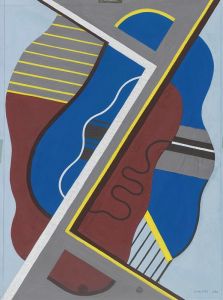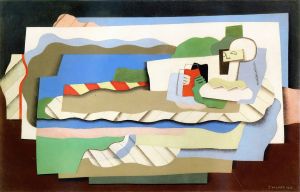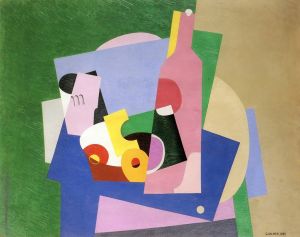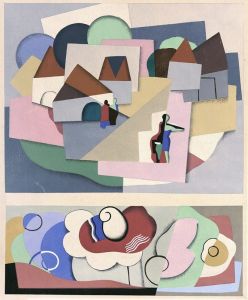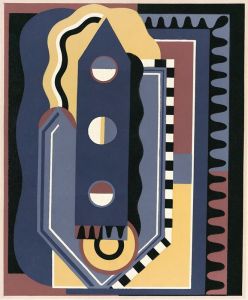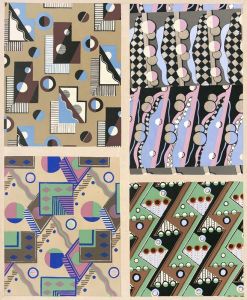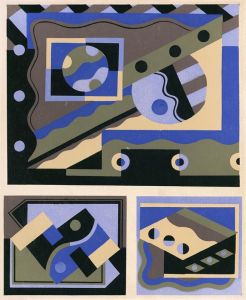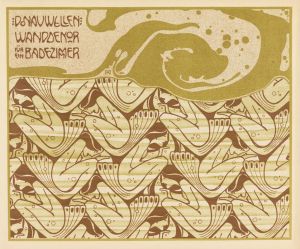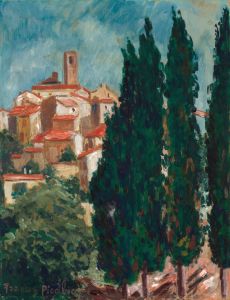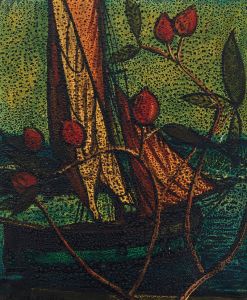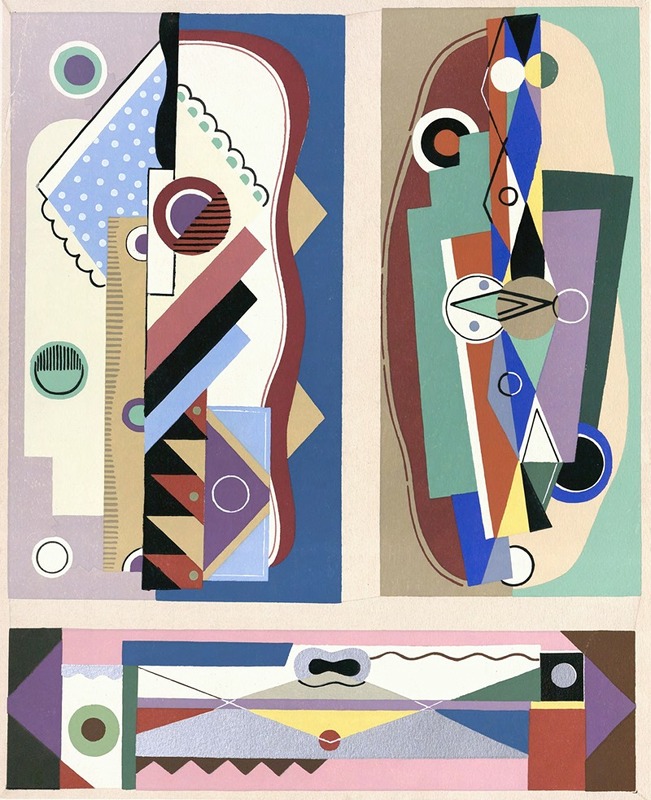
Collection decors et couleurs Pl.17
A hand-painted replica of Georges Valmier’s masterpiece Collection decors et couleurs Pl.17, meticulously crafted by professional artists to capture the true essence of the original. Each piece is created with museum-quality canvas and rare mineral pigments, carefully painted by experienced artists with delicate brushstrokes and rich, layered colors to perfectly recreate the texture of the original artwork. Unlike machine-printed reproductions, this hand-painted version brings the painting to life, infused with the artist’s emotions and skill in every stroke. Whether for personal collection or home decoration, it instantly elevates the artistic atmosphere of any space.
Georges Valmier (1885–1937) was a French painter and a prominent figure in the Cubist movement. His work is characterized by bold geometric shapes, vibrant colors, and a strong sense of rhythm and composition. Among his many contributions to modern art, Valmier created a series of decorative works that explored the interplay of form and color, one of which is titled Collection Décors et Couleurs, Pl. 17.
This piece is part of a larger portfolio of designs that Valmier produced during his career, reflecting his interest in applying the principles of Cubism to decorative arts. The series, Collection Décors et Couleurs, was likely intended to showcase Valmier's ability to merge fine art with functional design, a concept that gained traction in the early 20th century as artists sought to bridge the gap between art and everyday life.
Pl. 17 exemplifies Valmier's mastery of abstraction, featuring a composition of overlapping geometric shapes rendered in a harmonious palette of colors. The work demonstrates his skill in balancing complexity and clarity, as well as his commitment to exploring the expressive potential of non-representational forms. The vibrant hues and dynamic arrangement of shapes in Pl. 17 reflect the influence of both Cubism and the broader modernist movement, which emphasized innovation and experimentation.
Valmier's contributions to the decorative arts, including works like Pl. 17, were part of a broader trend during the early 20th century, where artists sought to integrate modernist aesthetics into various aspects of design. His designs were not limited to painting but extended to textiles, theater sets, and other applied arts, showcasing his versatility and forward-thinking approach to art-making.
While specific details about the creation and context of Pl. 17 are limited, it is clear that the piece aligns with Valmier's broader artistic vision. His work continues to be celebrated for its vibrant energy, technical precision, and innovative approach to abstraction. Today, Valmier is regarded as a key figure in the development of modern art, and his decorative works, including Pl. 17, remain an important part of his legacy.
Further research into the provenance and historical context of Pl. 17 may provide additional insights into its significance within Valmier's oeuvre and the broader history of 20th-century art.






